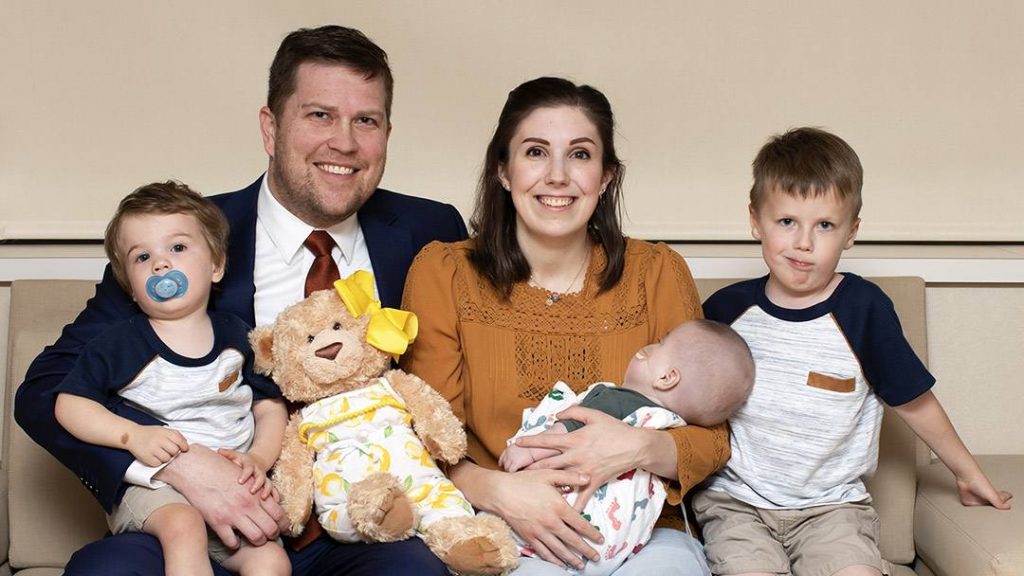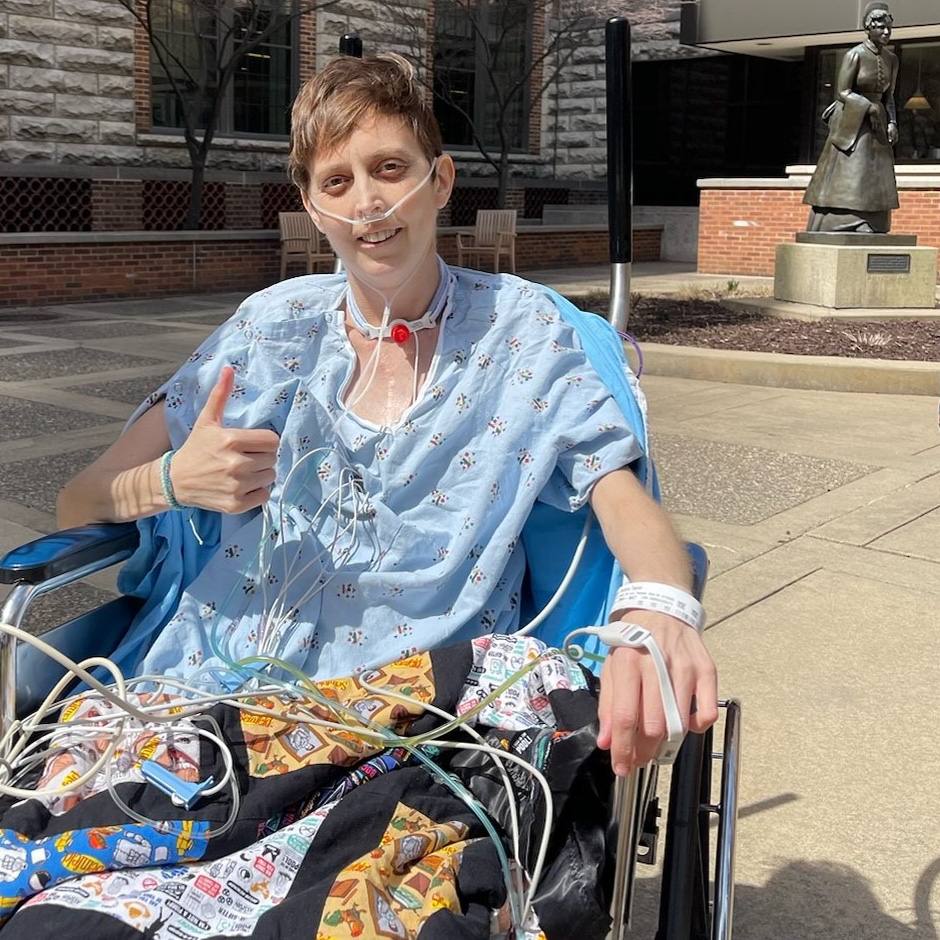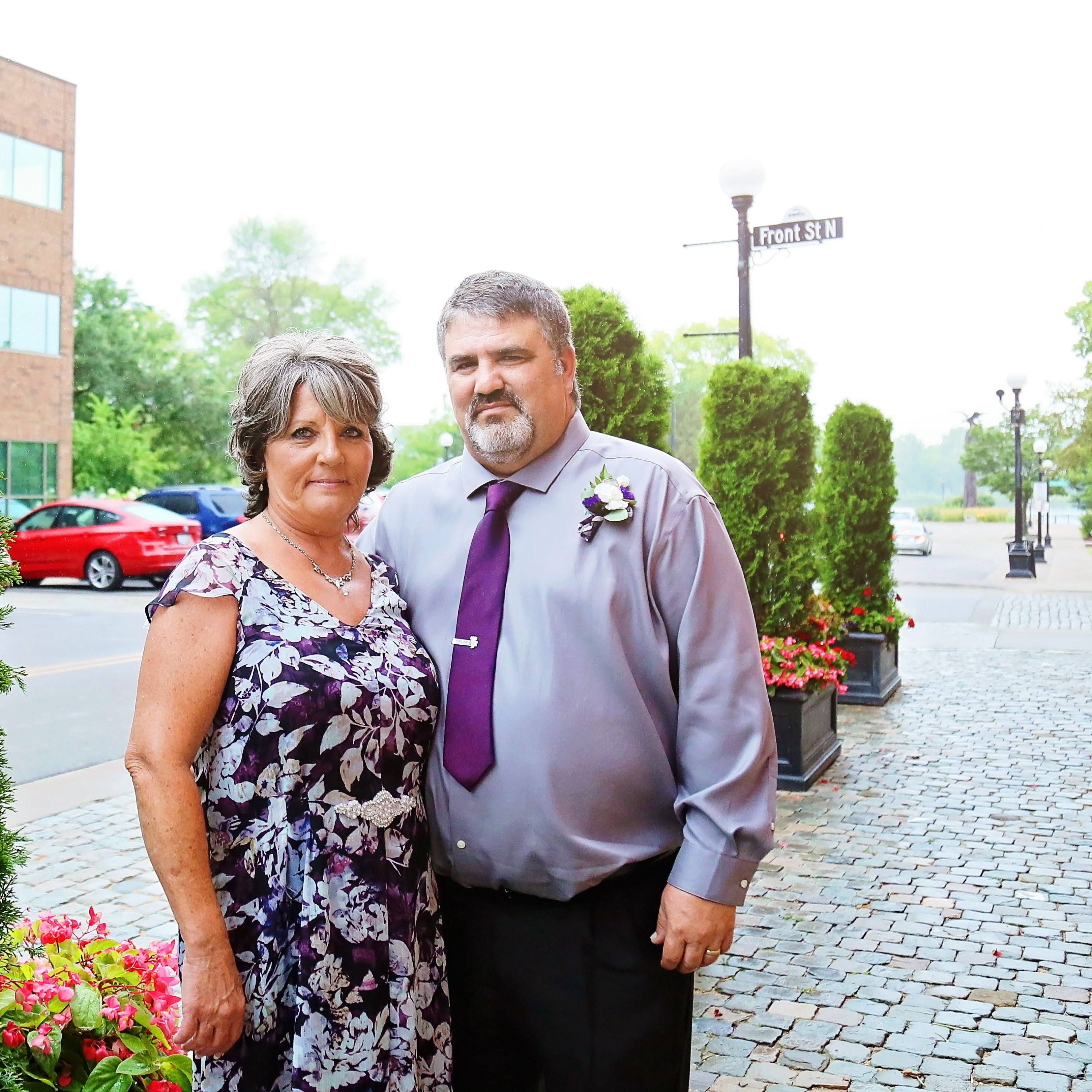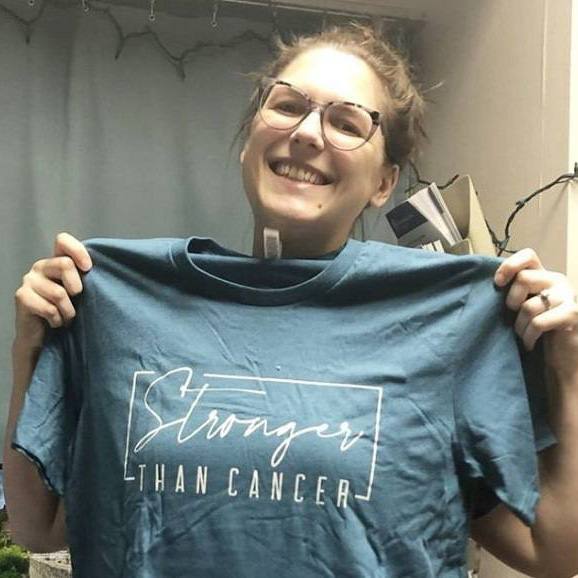-
Sharing Mayo Clinic
Lillian’s Gift: Finding New Purpose Driven by Grief

Mark and Anna Stanfield's daughter, Lillian, arrived at 35 weeks gestation, but she was stillborn. While the family still mourns the loss of their baby girl, they have worked to further research focused on stillbirth, as well as provide comfort to others dealing with pregnancy loss.
When Mark and Anna Stanfield's baby girl, Lillian, arrived on July 16, 2016, at 35 weeks gestation, she was stillborn. The loss shook the family to the core. However, following Lillian's death, the Stanfields directed their energy toward improving research around stillbirths and providing comfort for grief-stricken families.
The Stanfields treasured every moment of the three hours they were able to spend with their baby. But they yearned for more time to memorize how she looked and felt. The void her loss opened in them only deepened when the physicians in their Maryland hospital offered no real explanation for her death.
"We have been given every reason under the sun for why Lillian died, but nothing conclusive has ever been found," Anna says. "Her death was pretty much unexplained."
Finding the lack of information around Lillian's death unacceptable, the Stanfields chose to focus where they felt they could make a difference — at Mayo Clinic. The family's ties to Mayo Clinic are personal. Anna grew up in Rochester, Minnesota. Her mother was a longtime staff member at Mayo before retiring in 2018. Anna and Mark moved back to Rochester in 2018 when Mark took a job as a project manager at Mayo Clinic.
Over the past three years, the Stanfields have contributed $18,000 to Mayo Clinic's research into intrauterine fetal demise. Their contributions will help Mayo researchers in their pursuit of how to prevent pregnancy loss. But the Stanfields hope their donation extends beyond academics and affects attitudes surrounding stillbirth.
"It's very common for society to view pregnancy and infant loss as an event versus the loss of a real family member," Mark says. "That makes it a cold clinical fact instead of something that's real — an injury to the heart that takes place. In reality, Lillian is a daughter, a sister, a granddaughter, a niece. And she came into the world like anybody does. Her absence is felt to us every single day. It was certainly more than an event."
Advancing research, altering attitudes
In America, where stillbirth rates have stagnated for several decades, research into the reasons behind it and how to prevent it is especially important, the Stanfields say, given that more babies are lost to stillbirth annually than childhood cancer, sudden infant death syndrome and premature birth combined.
Each year, 1 in 100, or about 24,000 babies in the U.S., are stillborn, according to the Centers for Disease Control and Prevention. What's more, about half of the deaths cannot be explained medically, according to research published by the Stillbirth Collaborative Research Network.
"It's pretty common, especially in the U.S., to be told a variety of things after stillbirth," Mark says "Personally, I feel a lot of the times that parents are given empty platitudes by providers and society in general. We owe the world — we owe our country — better than that."
The Mayo Clinic research supported by the Stanfields focuses on the reasons why fetal demise occurs. As part of the study, the immune systems of mothers and the placentas of stillborn babies are tested to better understand the immune responses and how those responses differ from the responses of mothers and babies born alive. The goal of this work is to develop new tests that could help physicians predict negative outcomes and provide treatments to prevent them.
"(At Mayo Clinic), we felt like we were truly heard and someone really cared about her death and what we were experiencing."
Anna Stanfield
For the Stanfields, who sought medical advice at Mayo Clinic after Lillian's death to help them understand the risks of pursing another pregnancy, it makes sense to support Mayo's research efforts.
"We came to Mayo for a second opinion after Lillian was born and were seen in Maternal Fetal Medicine by Dr. (Norman) Davies," Anna says. "That was the first time we felt like we could begin to have hope again after her death. The care we had at that first follow-up appointment was exceptional, and not one of our concerns was brushed off or dismissed. We felt like we were truly heard and someone really cared about her death and what we were experiencing."
Having their experience validated and supported was instrumental to their journey moving forward, say the Stanfields. "When we lost our daughter, we were just at a complete loss of what to do about it personally," Anna says.
While they will always bear the burden of losing Lillian, the Stanfields have three sons, two of whom were born following Lillian's arrival.
By making their donation and sharing their story, the Stanfields hope to shine a light on the losses that thousands of parents suffer each year. "We're not necessarily trying to change the world, but there's still a considerable taboo on talking about these things," Mark says. "But we have been open about it and want other parents not to feel alone. It's important to have the support out there."
Helping parents and honoring their daughter
A vital component of providing that support is giving parents of stillborn children time in the hospital to be with their baby, which is challenging because of the rate at which the babies' bodies begin to deteriorate.
The Stanfields are dedicated and passionate about creating a comfortable atmosphere for families going through this difficult time. In addition to their financial donation, they contributed to the purchase of Caring Cradles to Mayo Clinic's Department of Obstetrics and Gynecology. The Caring Cradle is a bassinet that cools and helps preserve the bodies of stillborn babies.
The Stanfields first shared with another family the cost of a Caring Cradle for use in Obstetrics and Gynecology. Then they purchased a second Caring Cradle on their own for the neonatal ICU at the Saint Marys Campus of Mayo Clinic Hospital — Rochester.
"For me, the opportunity to talk about (Lillian) and share her story is significant because just like any of our other children, we love talking about them and sharing about them."
Anna Stanfield
"A typical parental instinct is to want to keep them warm and wrapped up, even though the baby has passed," Anna says. "And that is so difficult because that actually hastens the rate of degradation."
Devices such as the Caring Cradle allow parents to spend hours and even days with their baby. "The Caring Cradle keeps the body much cooler and preserves the baby. It gives families potentially several days with their child so other family and friends are able to be with them, and hold them and dress them and spend time with them, which is incredibly important when you suddenly don't have that lifetime. You need to squeeze in all the memory making you can in that small amount of time."
For the Stanfields, becoming advocates for families affected by a stillbirth honors their daughter and gives meaning to her life "For me, the opportunity to talk about her and share her story is significant because just like any of our other children, we love talking about them and sharing about them," Anna says. "Being benefactors to this research is something we want to do for the rest of our lives."
HELPFUL LINKS
- Read about coping with pregnancy loss.
- Learn about fetal and maternal care at Mayo Clinic.
- Explore Mayo Clinic.
- Request an appointment.
Related Articles







